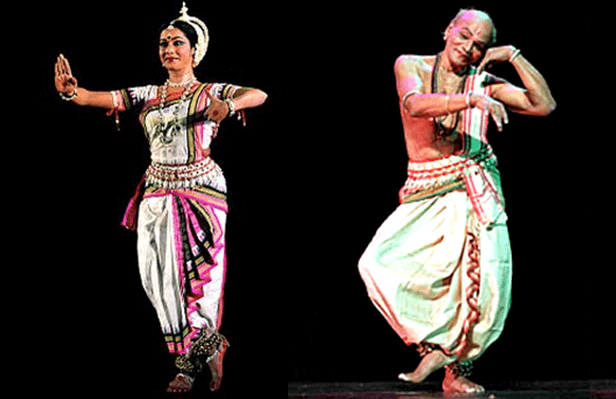

He is also keen on taking Devaraattam lessons to interested people. Kannan Kumar Master conducts regular folk dance workshops at Dakshinachitra Museum.

This way our indigenous dance form will sustain for several years to come. My sincere wish is that more people from the younger generation should learn the dance form and perform regularly. It is not easy to perform Devaraattam or any other folk dance for that matter without practice. People assume that no skill is required to learn folk dance. He has even conducted Devaraattam workshops for students from Germany, Iran, Canada, Spain, and the USA. They are also performing in various events and not restricting themselves to religious and community events. The people who are dancing in Kannan Kumar’s troupe are no longer from the Kambala Nayakar community. Usually, dancers follow the lead of one dancer who has a good memory of the steps. I learnt Devaraattam from watching my father perform. He is teaching Devaraattam and other folk-dance forms under the banner of ‘ Bharathi Gramiya Kalai palli’.

Kannan Kumar from Chennai has made this indigenous dance form Devaraattam commonly available to all people. Note the sheath like mark on the left side of the urumiħ0 years old Mr. Now their descendants are mainly practicing agriculture. ‘ Sozhi josiam’ or prediction using the fall of cowrie shells and exorcism are other occupations of these people. These fortune-tellers are usually from the Kambala Nayakar community. In Tamil Nadu, one must have noticed a ‘ Kuduguduppu Karan,’ a fortune teller with a ‘ udukkai’ (a small drum with a rattle ) saying, ‘ Nalla kalam porakkudu, Jakkamma solra,’ meaning – good fortune awaits, says Jakkamma. Their inhabitants usually live on pastoral areas and their occupations include hunting, cattle-rearing, and fortune-telling.

They worship Sakkadevi or Goddess Jakkamma as their main deity. One such community is the Kambala Nayakar community. They settled in areas in and around the districts of Madurai, Ramanathapuram, Dindugal, Theni, Tiruchirapalli, Salem, Dharmapuri, and Coimbatore ruled by the Nayaks. After the fall of Vijayanagara empire to Muslim invaders, many Telugu-speaking communities migrated further south from the Bellary district, now in Karnataka. Their mother tongue was Telugu and were staunch Vaishnavites. HistoryĪreas of present-day Tamil Nadu were under the control of Nayaks, generals of the Vijayanagara empire in the 16 th century. It is a dance form that is deeply rooted within the Kambala Nayakar community, a Telugu-speaking community who settled in Tamilagam in the sixteenth century. Jaggan: Musical Heritage of Jessore District, BangladeshĬontinuity and Change: A Restudy of Arnold Adriaan Bake’s Research on the Devotional and Folk Music and Dance of Bengal 1925-1956.The dance of the Gods or the Devas is Devaraattam. The non-playing side of the jhorka showing snare.Ĭommodifying Baul Spirituality: Changing Baul Literature and Music in Bangladesh It was the site of the annual village fair till. Although the other aspects of construction may be identical, the presence or absence of the snare makes a big difference in the tone of the instrument. The monolithic Hirenagavalli Hill (also locally called Mayalafakir Konda) is believed to be the site of a popular Telugu folk story of Balanagamma. The korka on the other hand, has a simple head without a snare. The jhorka has a snare at the bottom of it this is generally made by stringing three pieces of string across the surface of the drum. The distinction between the jhorka and the korka is to be found on the smaller head of the drum. The playing side of the jhorka / korka (larger head) Lacing of the drum is generally accomplished using jute rope and rawhide. The body of the drum is generally made of mango wood mango wood is known for its light weight, and easy of working. The drum skins are generally cow hide or goat skin. The smaller end is only about 29-30cm (approx 11 inches) this side is not struck. The larger face of the drum is roughly 36-38 cm (approx 15 inches) this is the playing side. It is a two sided drum similar to a snare drum or a tom, with the exception that both sides are greatly dissimilar in size. The drum has an interesting construction. Position for playing both the jhorka as well as the korka. It is slung around the neck while being played. These drums are played with two sticks made of strips of bamboo. It is generally used to accompany the dhol. It is commonly used in the vaoiaya (bhawaia) style of folk music, and is an absolute must for the lathi khela and the lathi naach. This drum is very popular in the folk music of northern Bangladesh. Although the two are nearly identical, the jhorka is a snare drum while the korka is a tom. Jhorka and Korka are two folk drums found in the music of Northern Bangladesh.


 0 kommentar(er)
0 kommentar(er)
